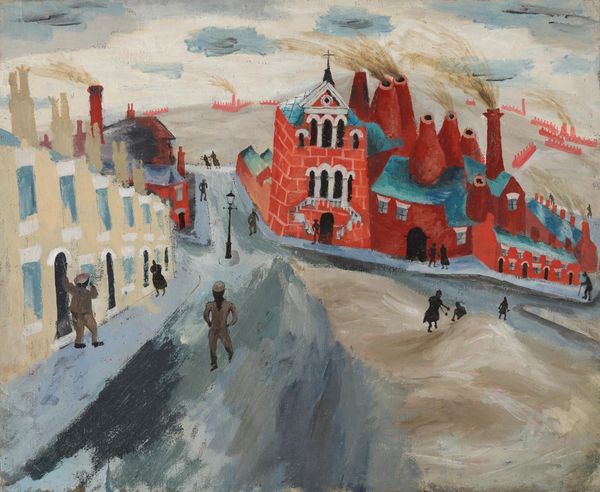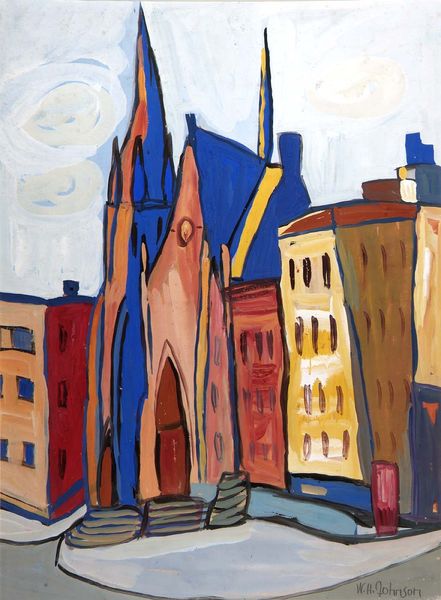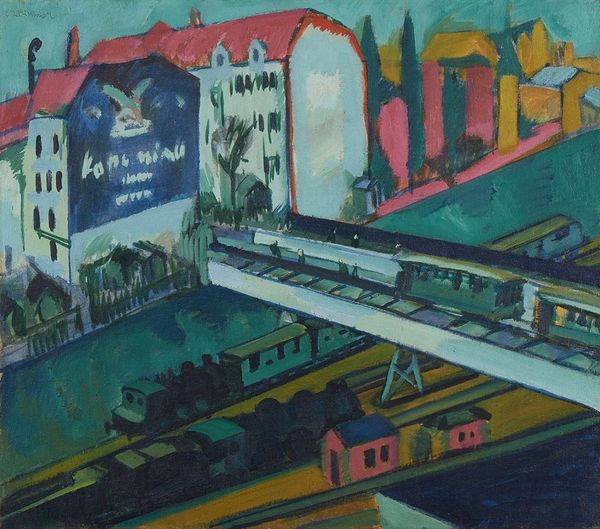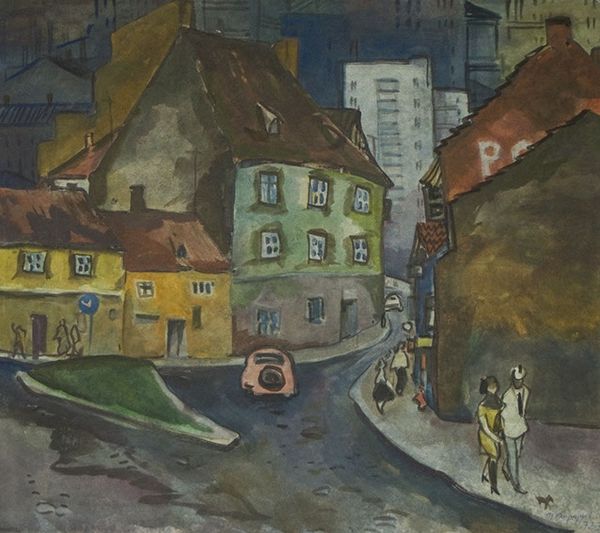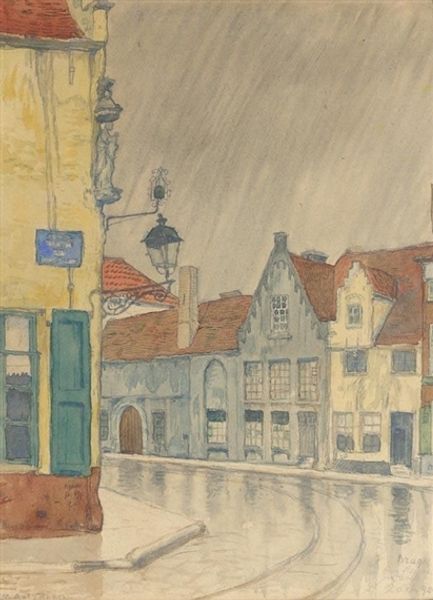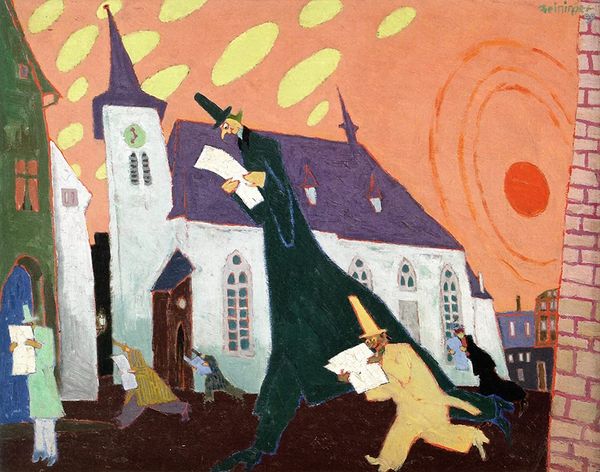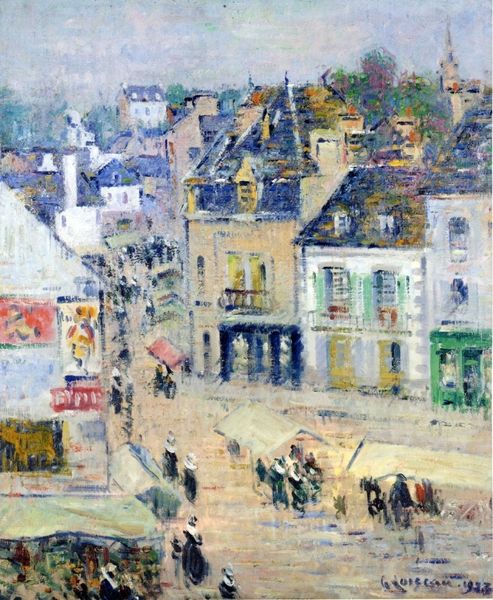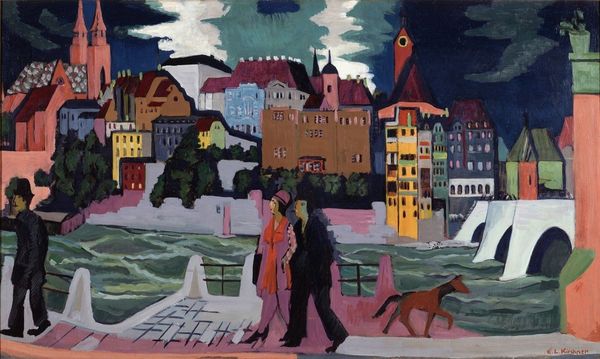
Copyright: Petros Malayan,Fair Use
Editor: So, this is Petros Malayan's "A Date," painted in 1971 using watercolors, apparently *en plein air*. I’m really drawn to the looseness of the brushstrokes. The colors are somehow both muted and vibrant. How would you interpret this work in its historical context? Curator: Looking at "A Date" through a historical lens, I find myself considering how the cityscape genre evolved and its social implications. This painting offers a seemingly simple scene, but let's consider the timing. 1971—post-war, evolving urban landscapes. How does Malayan's choice of a romantic encounter within this urban setting speak to the public's changing relationship with the city? Editor: That's a great point. The backdrop, that kind of muted European town square... I hadn't really thought about how a romantic interaction could be reflective of something larger. Does the impressionistic style influence this in any way? Curator: Absolutely. The impressionistic approach can be read as a comment on objective reality versus subjective experience, perhaps echoing the social uncertainties and evolving cultural narratives of the time. Who gets to have a "date" and where? Is the city a place for everyone? Does this artwork subtly address power dynamics? Editor: So it's less about just capturing the appearance of the scene and more about… positioning it within a conversation about the city's role and who has access to it? Curator: Exactly. It pushes us to think critically about what these seemingly simple scenes convey about social dynamics. It prompts conversations about power and inclusion. It makes me wonder, who is this painting for and how might it have been received when it was first exhibited? Editor: That is very insightful; I now view the piece very differently. It's made me realize that even seemingly simple artwork can speak volumes about the world around us when considering the time it was made. Curator: Indeed. By exploring the painting's social and political undertones, we can better understand how artists contribute to the public discourse and challenge existing power structures. Thank you.
Comments
No comments
Be the first to comment and join the conversation on the ultimate creative platform.
